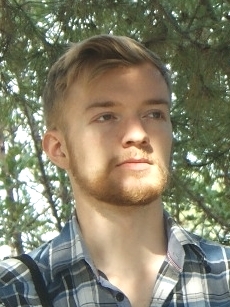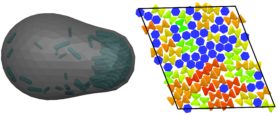
Robin van Damme MSc
Leonard S. Ornstein Laboratory, room 0.16
Princetonplein 1, 3584 CC Utrecht
P.O. Box 80 000, 3508 TA Utrecht
The Netherlands
phone: +31 (0)30 253 2467
secretariat: +31 (0)30 253 2952
e-mail: r.vandamme@uu.nl
Research
Promotors: Prof.dr.ir. Marjolein Dijkstra and Prof.dr. René van Roij
Funding: NWO
Period: 15 October 2016 – 14 October 2020
Simulations of active matter in confinement and self-assembly of anisotropic colloidal particles
Active matter is the grouping term for many-body out-of-equilibrium systems that exhibit collective behaviour (partially) as a result of energy being added to the system, usually on a local scale. These active systems come in many forms: bacterial swimming motion through the use of flagella, chemically anisotropic particles self-propelling as a result of a chemical reaction on their surface, or the biological cytoskeleton where myosin motor proteins walk over microtubuli and actin filaments, pushing them in return in accordance with Newton’s third law. For some of these systems, the interplay between their active nature and their anisotropic shape is crucial to explaining the phenomena they exhibit.
In my research I use Brownian dynamics simulations to study the collective behaviour of a collection of self-propelled rodlike particles, either in bulk or while confined to certain geometries such as a soft, deformable shell. Currently I am investigating the motility-induced phase separated (MIPS) state [1,2], and why it appears for spherical particles but not for rodlike particles.
In addition to my research on active matter, I also collaborate with experimental groups to study the self-assembly of colloidal particles of various shapes, usually through the use of Monte Carlo simulations.
Figure: (left) Self-propelled rods confined to a deformable shell. (right) Snapshot of hourglass-shaped particles self-assembling while confined to a fluid-fluid interface.
[1] M. Cates and J. Tailleur, Annu. Rev. Condens. Matter Phys. 6:1 219-244 (2015)
[2] S. Ramaswamy Annu. Rev. Condens. Matter Phys. 1:1 323-345 (2010)

